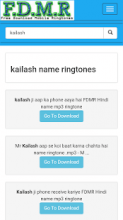Introduction to Database Management System (DBMS)
What Is The Database Management System (DBMS)?
A Database management system (DBMS) is a system software for creating and managing databases. The DBMS provides users and programmers with a systematic way to create, retrieve, update and manage data. A DBMS makes it possible for end users to create, read, update and delete data in a database. The DBMS essentially serves as an interface between the database and end users or application programs, ensuring that data is consistently organized and remains easily accessible. The DBMS manages three important thing which are the data, the database engine that allows data to be accessed, locked and modified as well as the database schema, which defines the logical structure of the databases. These three foundation elements help provide concurrency, security, data integrity and uniform administration procedures.
Many database management systems are also responsible for automated rollbacks,restarts and recovery as well as the logging and auditing of activity. The DBMS is perhaps most useful for providing a centralized view of data that can be accessed by multiple users, from multiple locations, in a controlled manner. A DBMS can limit what data the end user sees, as well as how that end user can view the data, providing many views of a single database schema. End users and software programs are free from having to understand where the data is physically located or on what type of storage media it resides because the DBMS handles all requests.
The DBMS can offer both logical and physical data independence. That means it can protect users and applications from needing to know where data is stored or having to be concerned about changes to the physical structure of data (storage and hardware). As long as programs use the application programming interface (API)for the database that is provided by the DBMS, developers won't have to modify programs just because changes have been made to the database.
With relational DBMSs (RDBMSs),this API is Structured Query Language (SQL) a standard programming language for defining, protecting and accessing data in a RDBMS.
Popular types of DBMS
Popular database models and their management systems include:
- Relational database management system (RDMS) - adaptable to most use cases, but RDBMS Tier-1 products can be quite expensive.
- NoSQL DBMS is well-suited for loosely defined data structures that may evolve over time.
- In-memory database management system (IMDBMS) provides faster response times and better performance.
- Columnar database management system (CDBMS) - well-suited for data warehouses that have a large number of similar data items.
- Cloud-based data management system - the cloud service provider is responsible for providing and maintaining the DBMS.
- 232 reads
Your Help Required to Keep The Lights On!
Satisfied with the provided Services?
Show your LOVE and Secure BHp's Future.
Every single Penny helps, counts and means a lot
And will be spent to Deliver Even More.
Introducing Free Membership of BookShare for Pakistanis
Popular on BHP
-
Title: FDMR V1.0 (Free Download Mobile Ringtones)
 Type: softwareTotal views: 1,041,695
Type: softwareTotal views: 1,041,695 -
Title: AAct V4.3.1 Portable (An Activator for Ms Windows and Office)Type: softwareTotal views: 310,174
-
Title: Eloquence TTS for all operating systems
 Type: softwareTotal views: 226,283
Type: softwareTotal views: 226,283 -
Title: Vocalizer Expressive V2.2 for NVDA 25 and LaterType: softwareTotal views: 170,325
-
Title: NVDA V2025.3.2 with Eloquence - Portable Version IncludedType: softwareTotal views: 150,572
-
Title: Re-Loader 3.0, Windows plus Office activaterType: softwareTotal views: 136,971
-
Title: Microsoft Toolkit V2.7.1Type: softwareTotal views: 105,809






